Despite Deceleration in Occupancy and Rent Growth, Increased Office Supply Expected to Track with Demand
The U.S. office market continued to benefit from strong fundamentals going into 2018, despite continued deceleration in net absorption, occupancy and rental rate growth.
With robust corporate profits and continued office-using job growth, that trend is expected to hold through the year as the recently approved tax cuts and expected gradual increases in interest rates make U.S. office and other institutional-grade property types an attractive place for investors to park capital and get cash flow.
“You’re going to like GDP growth over the next few months,” Hans Nordby said during CoStar’s year-end 2017 State of the U.S. Office Market report. “Corporate profit growth is a good story, and if you already think it’s strong, look underneath the hood. It’s even better.”
The improved profit growth outlook for the services sector and other industries that drive office demand, along with expected higher GDP growth projected at a very strong 2.5% to 3% in the next few months, should help office job growth hold steady at strong levels for the next few month, Nordby said.
The U.S. office vacancy held steady at 10.1% at the end of the fourth quarter 2017, unchanged from the same period a year prior, despite a large amount of new supply and a 20% decline in office net absorption to 65 million square feet for 2017.
Meanwhile, the total amount of office property acquired by investors declined about 15% in 2017 from the prior year, largely due to a sharp drop in office trades in New York City and other gateway markets.
Despite the declining sales volume, average prices in primary markets continued to rise, prompting investors to fan out into secondary markets such as suburban Phoenix, where Transwestern Investment Group and JDM Partners acquired Marina Heights, State Farm’s office campus in Tempe, AZ, for $930 million at $459 per square foot.
Signs of a deceleration in office sales and leasing are evident in several office boom markets, however, including Nashville and San Jose in California’s Silicon Valley. Developers delivered 2.9 million square feet in Tennessee’s Music City and 8.5 million square feet in San Jose as projects started during the height of the current cycle joined office inventory.
In a positive sign, the brand-new stock in both markets is already about 80% occupied thanks to strong leasing by health-care tenants and tech companies such as Apple and Google.
“We’ve definitely seen a peak in the office market,” Leonard said. “Everywhere across the board, we’re starting to see a deceleration.”
Leonard sees the national office vacancy rate ticking up beginning this year through 2020 as the expected new supply of space finally begins to outpace demand.
Another sign of the slowing office market is the continuing decline in the percentage of U.S. submarkets posting occupancy gains. At the beginning of 2016, more than 60% of office submarkets saw occupancy gains, according to CoStar information. A year later, that number has fallen to less than half.
Despite speculation about over the last few quarters about a potential bubble in technology stocks and a decline in venture capital funding, tech tenants continued to log huge absorption gains in the office leasing market. Office sharing firm WeWork led all companies with more than 7.5 million square feet of office space leased in 2017, one-third of that total in New York City alone. Amazon and Apple, which each made major announcements last week regarding future office campuses, each leased more than 3 million square feet. Google, Salesforce.com and telecommunications companies AT&T and Verizon also ranked in the top 10 in office leasing last year. Moreover, availability rates for sublease space have fallen over the past few quarters after ticking up in markets such as San Francisco and Houston in 2016 through early last year during a pause in tech’s dizzying growth of the previous few years.
Star Turn for Suburban, Tier 2 Markets
The largest investment deals of the fourth quarter reflected both the continued health of transaction activity and pricing in core coastal markets as well as rising investor interest in suburban, secondary and even tertiary office markets.
Starwood Capital Group paid joint venture partners Brandywine Realty Trust and DRA Advisors, LLC roughly $333 million for a 1.2-million-square-foot office portfolio in Austin. In the Big Apple, SL Green Realty Corp. and RXR Realty acquired One Worldwide Plaza for $840 million, $829/SF, from New York REIT, Inc.
In the west, suburban Los Angeles submarkets like Torrance and El Segundo in L.A. County’s South Bay are warming up in the wake of the downtown and Westside office boom. Starwood Capital scooped up Pacific Corporate Towers in El Segundo for $605 million, $381/SF, from a JV of Blackrock and General Motors Pension Trust.
RANDYL DRUMMER
